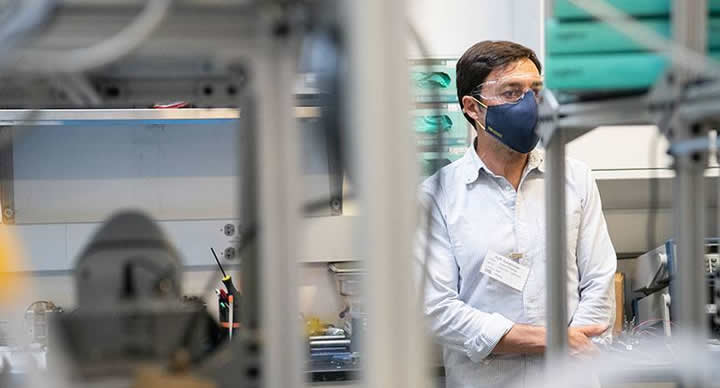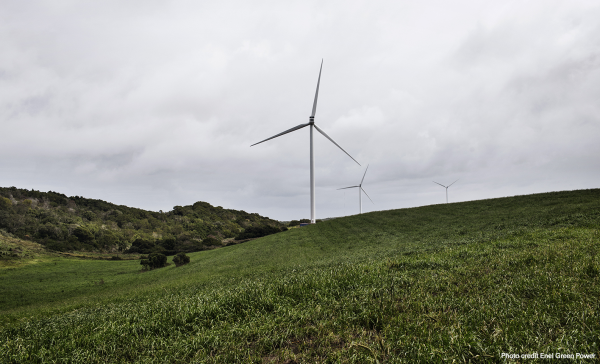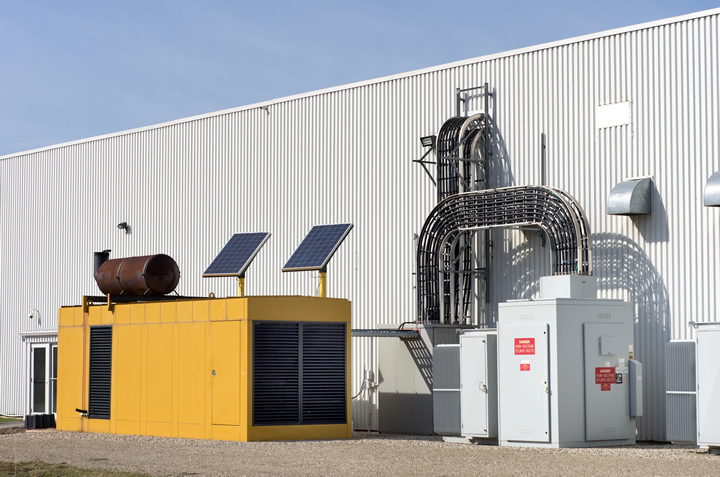Solar Energy Infrastructure: Is It Cyber Secure?
Increasing the production of solar energy comes with specific security concerns. Before evaluating the safety of a smart grid, individuals must assess the technology's structure and functions.
Utilizing Ocean Heat as a Renewable Energy Source
An increasingly researched renewable resource is called ocean thermal energy conversion (OTEC), in which the sea's temperature variations are used to produce power. Utilizing this heat could prove to be a great achievement.
NREL, Mines Insight Could Lead to Better Silicon Solar Panels
The lessons learned at the atomic level could lead to improvements in the way manufacturers strengthen their products against what is known as light-induced degradation.
NREL Enables Affordable Housing by Expanding Beyond Energy Efficiency
When looking at how energy efficiency can lower housing costs, "Utility bills are the easiest target," said NREL engineer Kristin Field-Macumber. "Now we are also looking at advanced manufacturing and making production more efficient."
Solving the Carbon dilemma
Beyond moving away from fossil fuels, one of the most promising strategies is trapping carbon and either sequestering it in the ground, or using it for other applications. There are a number of ways this can be done.
Electric Hydrogen Partnership Hopes To Repeat Success With Renewable Hydrogen Technology
The National Renewable Energy Laboratory (NREL) and clean hydrogen company Electric Hydrogen have inked an agreement to develop high-performance electrolyzer components, helping to scale clean hydrogen and invent new opportunities for decarbonization.
ENEL BEGINS BAT DETERRENT TRIAL AT SOUTH AFRICAN WIND PLANT
Bat Deterrent Systems were installed on three of the plant's 37 Nordex turbines by Nordex technicians, following remote guidance from NRG's Technical Services team. This is the second trial of NRG's Bat Deterrent System in South Africa.
NREL Pinpoints Method for Moving Larger Wind Turbine Blades Across Country
Manufacturing blades that can bend with "controlled flexing" will allow railroads to ship longer blades around the United States. Because of bends, twists, and turns in railroad lines, the upper limit for transporting single-piece land-based blades by rail is currently 75 meters.
Solar Creating Resilience in Disaster-Hit Areas
Environmental engineers developed a solar storage system, creating an abundant energy supply before a storm hits. Instead of directly transferring electricity to local homes, the technology stores energy in shipping containers as green hydrogen.
How Data Centers are Using Hydrogen Fuel Cells
Owners can shrink their carbon footprints by powering their centers' generators with alternative energy. Hydrogen fuel cells effectively reduce emissions, converting a company's electricity reliance away from diesel towards sustainable options.
CAREFUL POLICY DESIGN COULD UNLOCK MASSIVE ROOFTOP SOLAR MARKET AROUND THE WORLD
New BloombergNEF and Schneider Electric report finds rooftop solar market still largely untapped with potential to exceed 2,000 gigawatts of solar and 1,000 gigawatt-hours of energy storage by 2050
Why Are Environmental Tests Crucial for Solar Power Success?
Many leading solar panel manufacturers guarantee their products for 25 years. However, investigations show that the equipment often fails much sooner than that. Researchers sought to find out why.
Rising Demand for EVs Will Disrupt Auto Manufacturing
The most significant transformations are likely to happen in factories, where the differences between EV and ICE vehicles could reshape workflows and drastically reduce labor hours.
DRINKing It in: Five Teams and Their Desalination Designs Earn a Spot in Final Stage of Waves to Water Prize Competition
This month, DOE and NREL officially announced the five teams that earned a spot in the fifth and final competition stage, DRINK. Now, these five have 180 days to prepare their devices for an open-ocean trial at the Coastal Studies Institute in North Carolina in April 2022.
How photovoltaic glass can be used to cut harmful emissions
This versatility means that PV glass can be used for several different applications to help individuals and businesses reduce their energy costs by replacing conventional glass in buildings, vehicles and other structures.
Records 1 to 15 of 1788
Featured Product

U.S. BATTERY RENEWABLE ENERGY SERIES DEEP CYCLE BATTERIES
Our RE Series batteries are designed to provide the highest peak capacity, longest cycle life, and greatest reliability for use in industrial or residential renewable energy applications. Renewable Energy Series batteries utilize the company's exclusive XC2™ formulation and Diamond Plate Technology® to create the industry's most efficient battery plates, delivering greater watt-hours per liter and watt-hours per kilogram than any other flooded lead-acid battery in the market. Our Deep Cycle batteries are engineered to work with solar panels as well as other renewable energy applications.

.jpg)
.jpg)
.jpg)




.jpg)

.jpg)
.jpg)
.jpg)

